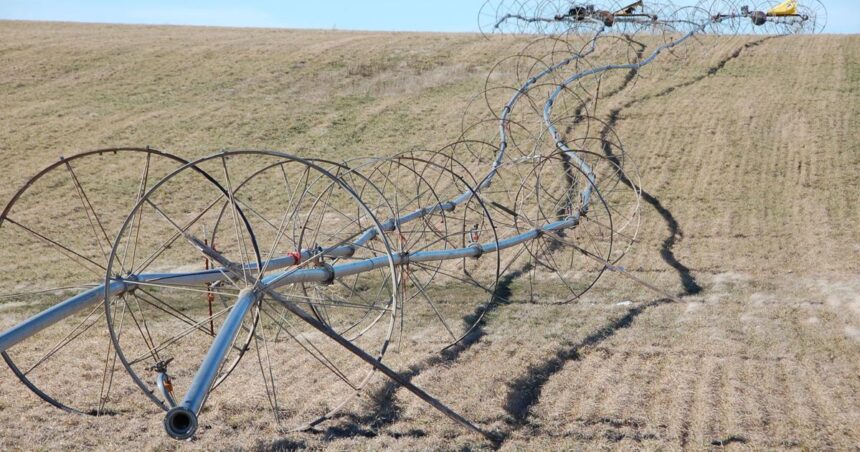The estimated value of Oregon farmland has skyrocketed in recent years, outpacing averages nationwide and leading to concerns about affordability for the next generation of farmers.
In a recent analysis of data from the latest U.S. Census of Agriculture, Oregon State University Economics Professor Dan Bigelow found that the estimated value of Oregon farm real estate grew $10.7 billion between 2017 and 2022. That’s a 23% gain in just five years, and more than triple the 7% gain in total estimated farm real estate value nationwide.
“This prolonged period of increase is pretty unique, at least in modern history,” Bigelow said.
It’s driven by a number of factors, including historically low interest rates for borrowing in the last decade, an overall decline in available farmland in the state and consolidation of remaining farmland.
Between 2017 and 2022, the amount of available farmland in Oregon declined by 4%, according to the census, which is undertaken every five years by the U.S. Department of Agriculture. Another big factor is investment in farmland by non-farmers. Bigelow said a growing number of investors and publicly traded real estate investment trusts are sinking money into agricultural land across the U.S., including in Oregon.
“Throughout the last several decades, its (farmland) value has kind of outpaced inflation,” he said. “It tends to hold its value during economic downturns, and it’s not the type of investment that you’re going to get rich quick off of but it’s a durable asset. It’s not depreciating in value.”
In the census, farmers are asked to estimate the value of their farmland and buildings if they were to be sold on the open market. It is the only regularly updated county-level data the USDA has about farm real estate values, according to Bigelow, who used to work for the agency.
Per acre, estimated Oregon farm values grew 29% between 2017 and 2022, according to Bigelow’s analysis of the census data. Oregon farms are, on average, estimated to be worth about $3,700 per acre. But there are large differences across counties. The most valuable farmland is in the Willamette Valley, where average estimated real estate values are above $20,000 per acre. This is due in part to the value of the crops grown on the land. Wine grapes, fruit orchards and specialty crops can command higher prices than many commodity and row crops.
In eastern Oregon counties such as Harney, Grant, Gilliam and Wheeler, estimated farmland values are about $1,400 per acre. Still, in most of the region, values are significantly higher than they were in 2017. In Wasco, Morrow, Lake and Crook counties, per-acre farmland values increased more than 60% between 2017 and 2022, according to Bigelow’s analysis. In Jefferson County, values increased 80% in that time. Some of this is driven by demand for irrigated land that already has secured water rights attached to the sale, Bigelow said.
“Because of the increased recognition of water scarcity, and the fact that it’s widely known at this point – or it’s widely thought – that irrigation water is just going to become more scarce in the future. And the value of land, fundamentally, is driven by what you’re going to earn from it in the future,” he said.
Challenges for new farmers
Such huge increases in land values mean it’s harder than ever to be a beginning farmer hoping to acquire new land, according to farm industry groups.
“Farms have to be bigger and bigger to succeed, and then you get the regulations that the state imposes on farmers big and small, and it makes it really hard for beginning farmers to start out and really hard to be positive financially,” said Austin McClister, a spokesperson for the nonprofit Oregon Farm Bureau, among the largest industry groups in the state.
“Beginning farmers, I feel, do not exist,” he said.
Alice Morrison, co-director of the nonprofit Friends of Family Farmers, works with older farmers to transition their land to new farm families, rather than selling to large corporations or investment trusts.
Many farmers are, as Morrison put it, land rich and cash poor. The average farm in Oregon is worth $1.5 million on the open market, a more than 30% increase since 2017 and double the average increase nationwide. But the average farm income in the state in 2022 was just over $26,000, according to the census data.
Morrison said Friends of Family Farmers works with retiring or older farmers and potential new farmers to come to an agreement about a land transition that might go for less money than an investor can provide, but still result in a reasonable sale for the outgoing farmer.
“It’s like, OK, they can give you 120% market value as a cash buyer with a speculative portfolio, or, can we give you 80% market value,” she said.
Ultimately, Morrison believes more needs to be done to regulate the market to give new farmers the power to compete in the market and provide older farmers options other than selling to investors and corporations.
“It’s unreasonable to tell a person who’s about to retire: ‘Hey, you have to forgo the money you thought you would have for retirement in order to live your values,’” she said. “We should have options so you can live your values and retire with dignity.”











